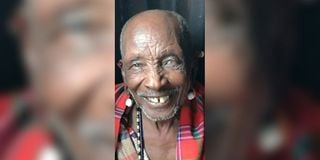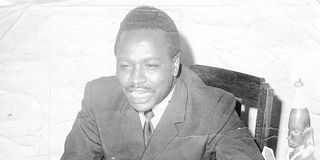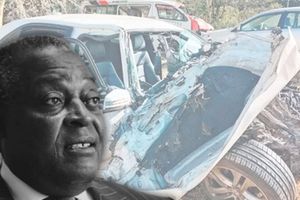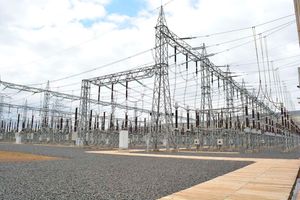Premium
Curtain falls on man who found JM Kariuki's body and how he changed the official narrative

Mr Musaite Ole Tunta, who died aged 109. As the last of the witnesses on March 2, 1975, unresolved murder of populist politician J.M. Kariuki, the mzee has gone to the grave with his story.
By the time he died during the festive season, Musaite ole Tunta had largely been forgotten by the public, but not by history.
As the last of the witnesses on March 2, 1975, unresolved murder of populist politician J.M. Kariuki, the mzee has gone to the grave with his story. Further, there was no chance for his testimony to be tested in any courtroom after the state let the killers roam free and later die undisturbed.
Ole Tunta was the man who found Kariuki’s body in the Ngong Hills’ terrain, where hyenas would have devoured it. Demands for a judicial inquiry, a truth commission — or a semblance of an attempt to unravel the truth — have come to naught.
A report from the parliamentary select committee that had pointed the direction in which future investigators should cast their eyes ended up in the parliamentary library and archives. The main suspects headed the investigation units or cavorted with the glitterati of the Kenyatta empire. The post-Jomo governments have decided to leave the matter to historians as memory fades.
Today, the number of witnesses is dwindling. Memories are fading. And, a crime, with all elements of a political assassination, and commercial motives, has become the foundation for impunity.
Finally, it seems, impunity has won.
Had ole Tunta not found Kariuki’s body — and reported it to the police — the abrasive Nyandarua North legislator would have disappeared without a trace, the same way freedom fighter Kung’u Karumba was said to have disappeared in Jinja, Uganda, in June 1974.
With the benefit of hindsight, the killers planned everything.
Gone to Zambia
As friends and relatives were looking for JM, a narrative was already building up in official circles that he had gone to Zambia or some other place. Finally, on March 7, assistant minister Justus ole Tipis admitted in Parliament that the MP was missing and asked anyone with information to cooperate with the police. But were the police looking for him? Your guess is as good as mine. There is no evidence that they were. But all indications were that there was a cover-up.
Before the government acknowledged on the afternoon of March 11, some nine days after the MP went missing, that the body had been identified, then-Vice-President Daniel arap Moi had been duped into telling Parliament that the politician’s whereabouts were still “unknown”. The Nation had also been fooled that JM was in Zambia. It was a disinformation strategy by the security apparatus.
On March 11, as this narrative was gaining tempo, JM’s wife, Terry, had been alerted that the body was at the City Mortuary – and could end up buried with other unidentified bodies at the morgue.
Ole Tunta had also been visited by Criminal Investigation Department officers and, as it emerged later, intimidated.

Family members stand next to the coffin carrying the body of Mr Musaite Ole Tunta the man who found the body of Mr JM Kariuki (inset).
Terry managed to get past the mortuary officials by identifying herself as Mrs Kamau, trying to trace a lost husband. That is how she identified her husband – who was still tagged as an “unknown adult male”.
By the time Moi was making his remarks in Parliament, the police bosses knew that the body was at the City Mortuary. It is intriguing that Kenya’s vice president, the very man who was in charge of internal security, had no idea what was happening – and that senior police officers were misleading him.
That same afternoon, Moi apologised to the House for misleading the MPs. And as his biographer Andrew Morton later wrote, Moi was lost for words as he convinced the House that he, too, was a victim. “It is terrible, I don’t know where we are heading,” Moi told the House.
As Morton later wrote: “The fact that he could not rely upon the force he headed showed very publicly how tenuous his position was.”
And that is how Ole Tunta was brought into the picture. At least one camp wanted to know the truth.
It was a week of tension.
On March 1, a bomb exploded inside an OTC bus at its Nairobi parking bay, which left 30 people dead. While no arrests were made despite the massive manhunt, it was claimed that the blast was used as an excuse to apprehend Kariuki for interrogation. Kariuki had been followed by reservist Patrick Shaw and General Service Unit commander Ben Gethi.
It is now argued that somebody was creating a climate of fear – ahead of Kariuki’s disappearance. Thus, on March 2, JM disappeared and was last seen in the company of Ben Gethi as they walked out of Hilton Hotel. Was he under arrest, or was he lured into a trap? Nobody seems to know. Previously, JM had lamented that his vehicle had been hit by what seemed to be a bullet, though Nairobi was a beehive of rumours.
Whatever happened after Kariuki was last seen with Gethi is still not clear. What we know is that he had been shot twice — and was never seen alive again after March 2. Only Mr Gethi knew what happened, plus the other people mentioned in the Parliamentary Select Committee report.
Ole Tunta’s role in this history is that he stopped the political narrative in his own naïve style. He dictated the course of history by making public his discovery. The assassins had tried to disfigure JM’s body, and by taking him to Ngong Hills, they knew he had no chance of being found.
Eaten by hyenas
As Ole Tunta told the Nation, the place where JM’s body was found had been the scene of four other violent murders. And as he said: “Only one body was recovered (while) the others were eaten by hyenas.”
According to his account, some youngsters had on March 2 heard gunshots at about 6.30 pm as they were going to play evening games in a neighbouring Manyatta.
“Scared, they avoided the direction from where the gunshots had come and took another path to the Manyatta, he reported. Going by that account, either JM was killed at the scene or somebody fired bullets to leave cartridges at the site. The police reports did not indicate whether there was any blood at the scene of the crime.

The late politician Josiah Mwangi (JM) Kariuki.
“The following morning I woke up early as usual to graze my goats near the Manyatta, which is near the road. Our Manyatta is on the left-hand side of the northern road to Magadi. I had not gone far when I saw the body of a man, not a Maasai, propped up near a shrub. The man appeared to be dead and blood had oozed from his mouth.”
He also observed that the pockets had been rifled and turned inside out, and the man had no shoes. That was significant, for it could mean that JM had been tortured elsewhere. Usually, police do not torture people with their shoes on.
Ole Tunta decided to call his neighbour, Meja ole Nchoki, and they went to the site. They agreed that they should report the matter to the police – and they hiked a tourist van heading to Ngong.
After reporting the matter to Ngong Police Station, they found that the police were reluctant to go to the site that morning. That has never been explained.
“We went back to the police station at 2 pm and left for Olosho-Oibor in the company of the Ngong District Officer, Sibondo-Oduol, the local Chief Mr Ernest Mbayeyi, a new police inspector at the station and a corporal, Mr arap Towett,” said ole Tunta.
Empty cartridges
The inspector searched the body and only found a handkerchief. They also found two empty cartridges at the scene.
If the boys heard gunshots, the people disposing of the body were perhaps creating a narrative that JM Kariuki was killed in Ngong and not in Kingsway, as suggested by later reports. That, in essence, would create an alternative scene of the crime.
After the police picked up the body, Ole Tunta was left behind, though he was later picked up by CID officers on the morning of March 4 and asked to make a statement. That was after the uproar that had been sparked after the family went public that JM was missing.
Shortly after the formation of the parliamentary committee to investigate the murder, some media reports claimed that Ole Tunta was also “missing”.
So serious was the matter that Vice-President and Minister for Internal Security Daniel arap Moi ordered that Ole Tunta should be taken to him.
Kirinyaga East MP Nahashon Njuno had raised the matter in Parliament and asked Moi to confirm that “the person who first saw the body of the late JM Kariuki in the Ngong Hills has also disappeared…It may be regarded now as a rumour, but rumours in Kenya sometimes turn out to be true. It all started as a rumour that JM was missing.”
In his political career, Kariuki had drawn the wrath of Gema and Kanu leaders for constantly attacking Kenyatta’s achievements since Independence and accusing the ‘greedy, self-seeking elite’ of monopolising the nation’s wealth. He would often chide them: “We do not want a Kenya of ten millionaires and ten million beggars.”
Ole Tunta’s death means that the man who first saw the undisturbed scene of the crime has gone with the story. We all know it is a lie if somebody tells us that the JM inquiry file is open. Time heals, but JM’s assassins might never have peace.
[email protected] @johnkamau1





